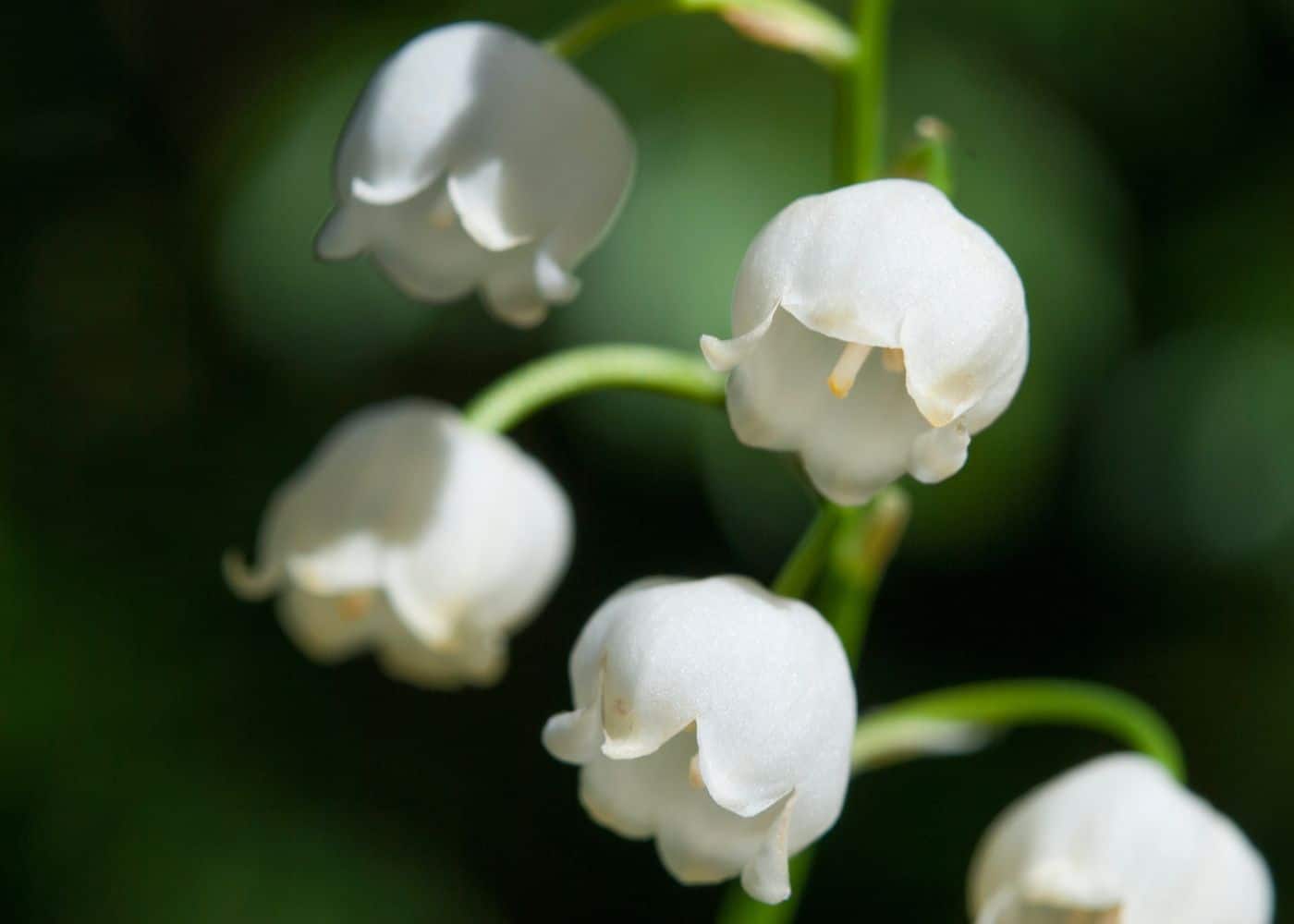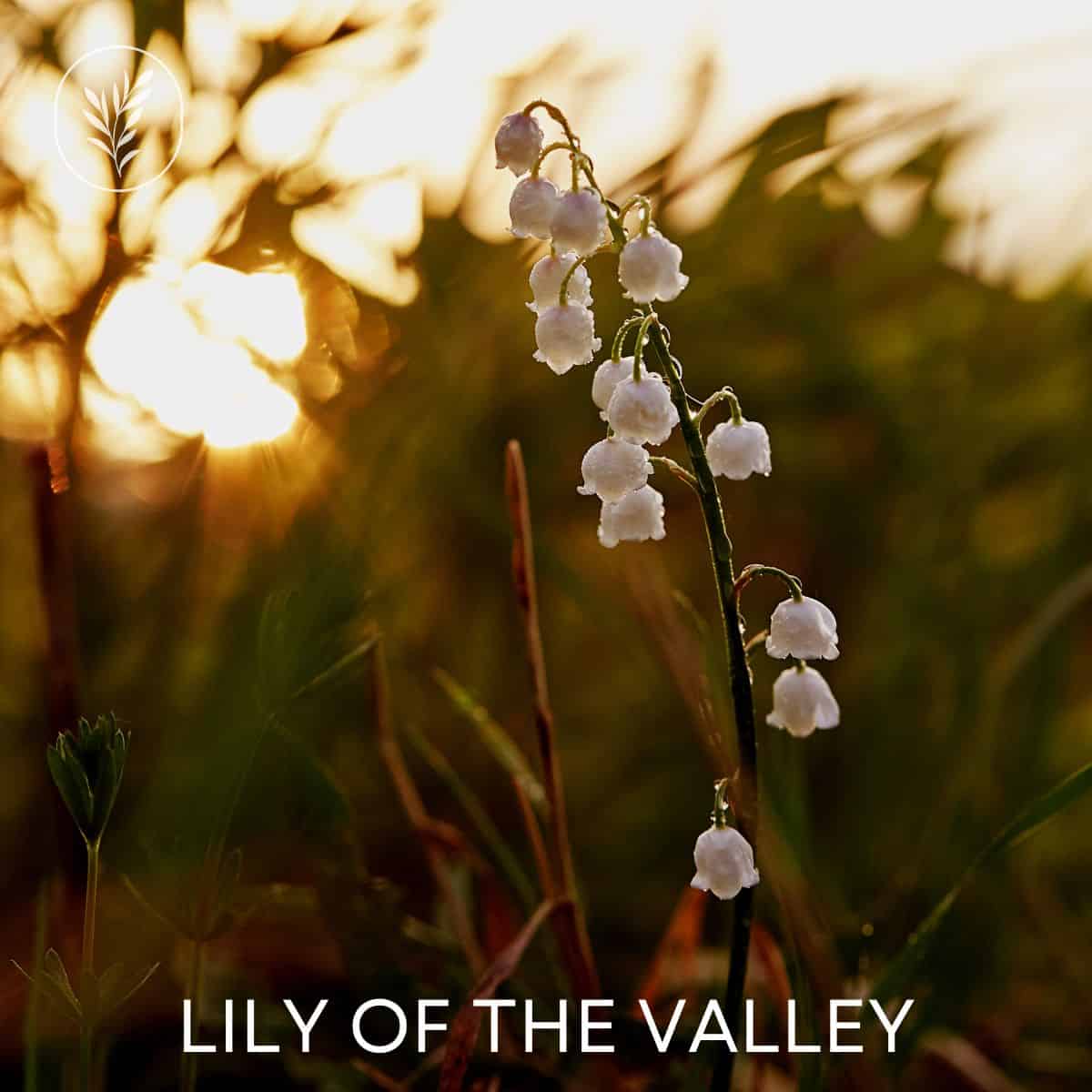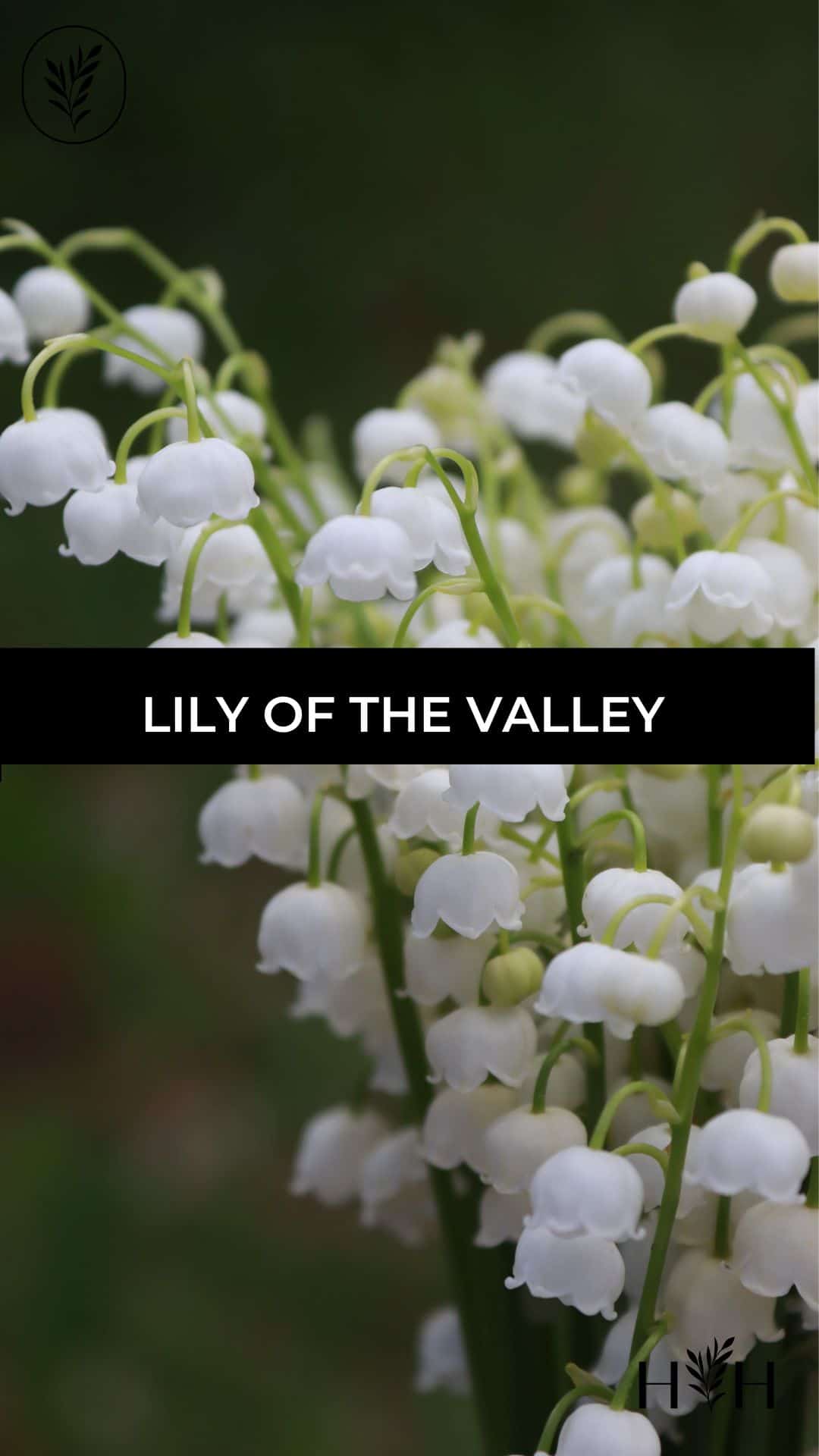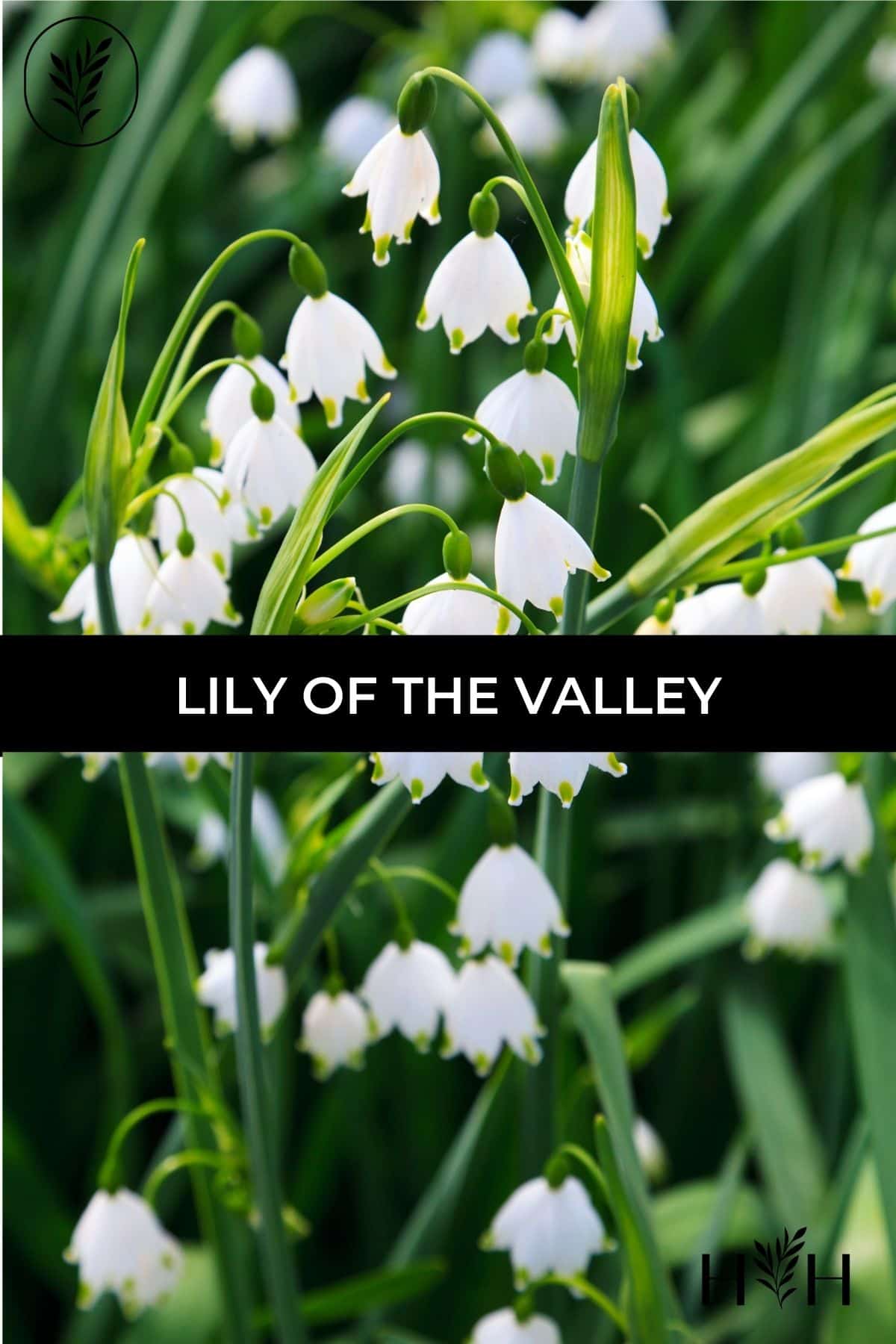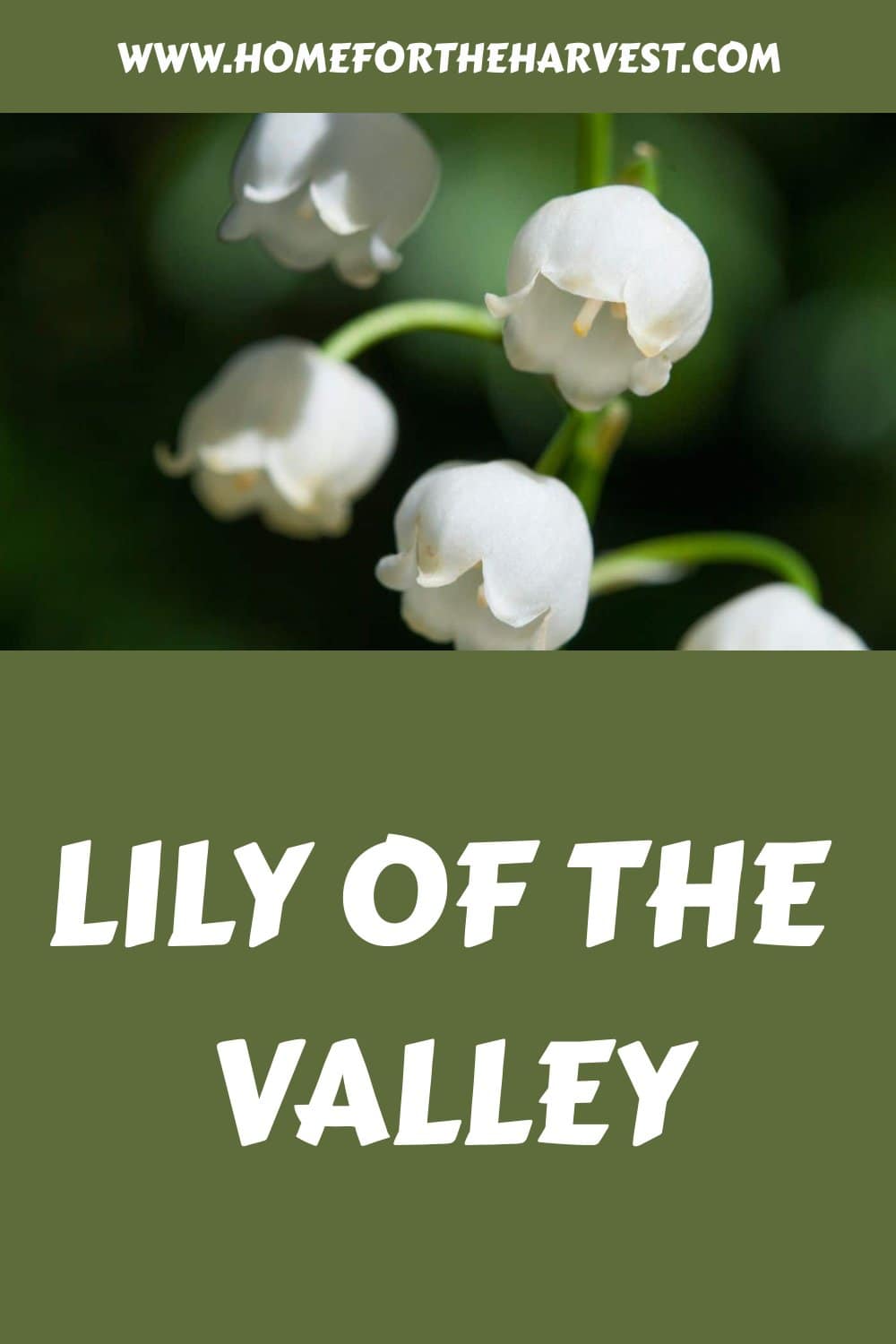Interested in growing the beautiful lily of the valley plant? This shade-tolerant flowering groundcover can be lovely in the right corner of the garden.
Lily of the valley (Convallaria majalis) is a small, flowering plant native to Europe and some regions of Asia. It has delicate, bell-shaped white flowers borne on slender stems. The flowers have a sweet, fragrant aroma but the plant is quite poisonous and should be handled cautiously.
Lily of the valley is known for its ability to spread in shady, moist areas and is often used as a ground cover or in borders and rock gardens. It is also a popular plant for small bouquets and floral arrangements.
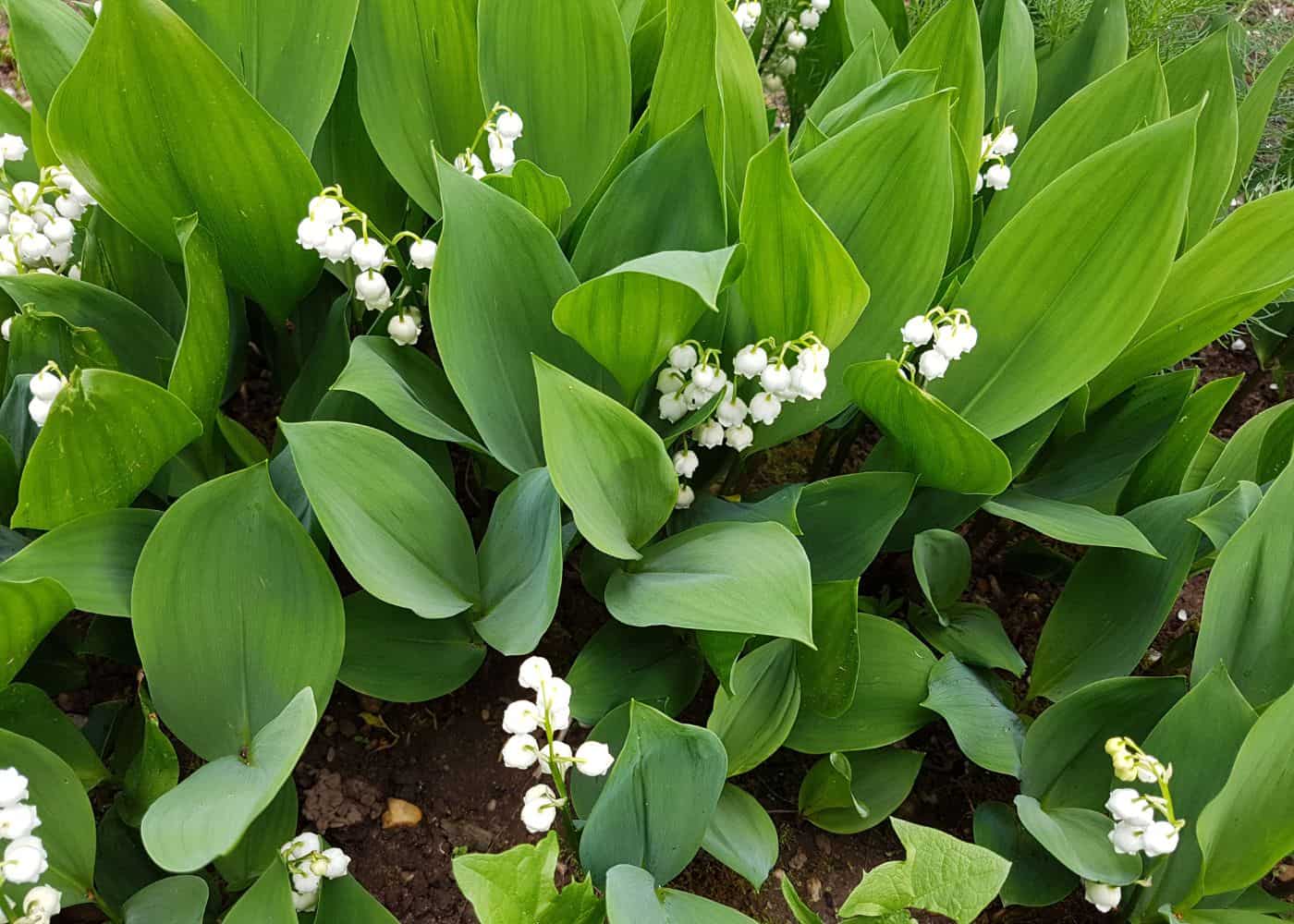
Lily of the valley
Lily of the valley (Convallaria majalis) is a low-growing flowering plant known for its tiny elegant white flowers. It grows as a herbaceous perennial, sprouting up fresh from its roots every spring and then dying back to the ground in the fall. This rhizomatous perennial is most commonly used in the garden as a self-spreading flowering groundcover for shady spots.
The lily of the valley’s flowers have a distinctive bell shape and grow in bunches on lanky stalks. While the flowers are dainty and gorgeous, this plant is quite toxic and needs to be handled with caution. And despite the common name, the lily of the valley is not a true lily in the botanical sense (and plants in the lily family have different growing preferences.)
Lily of the valley plants are generally hardy to zone 3, with some varieties hardy to zone 2 in the right conditions. They prefer partial shade or filtered sunlight; their delicate leaves can burn if exposed to too much direct sunlight.
Lily of the valley symbolizes purity and happiness. It is a favorite flower for wedding bouquets and was featured in Princess Kate’s bouquet and Princess Grace Kelly’s bouquet. Lily of the valley is also Finland’s national flower.
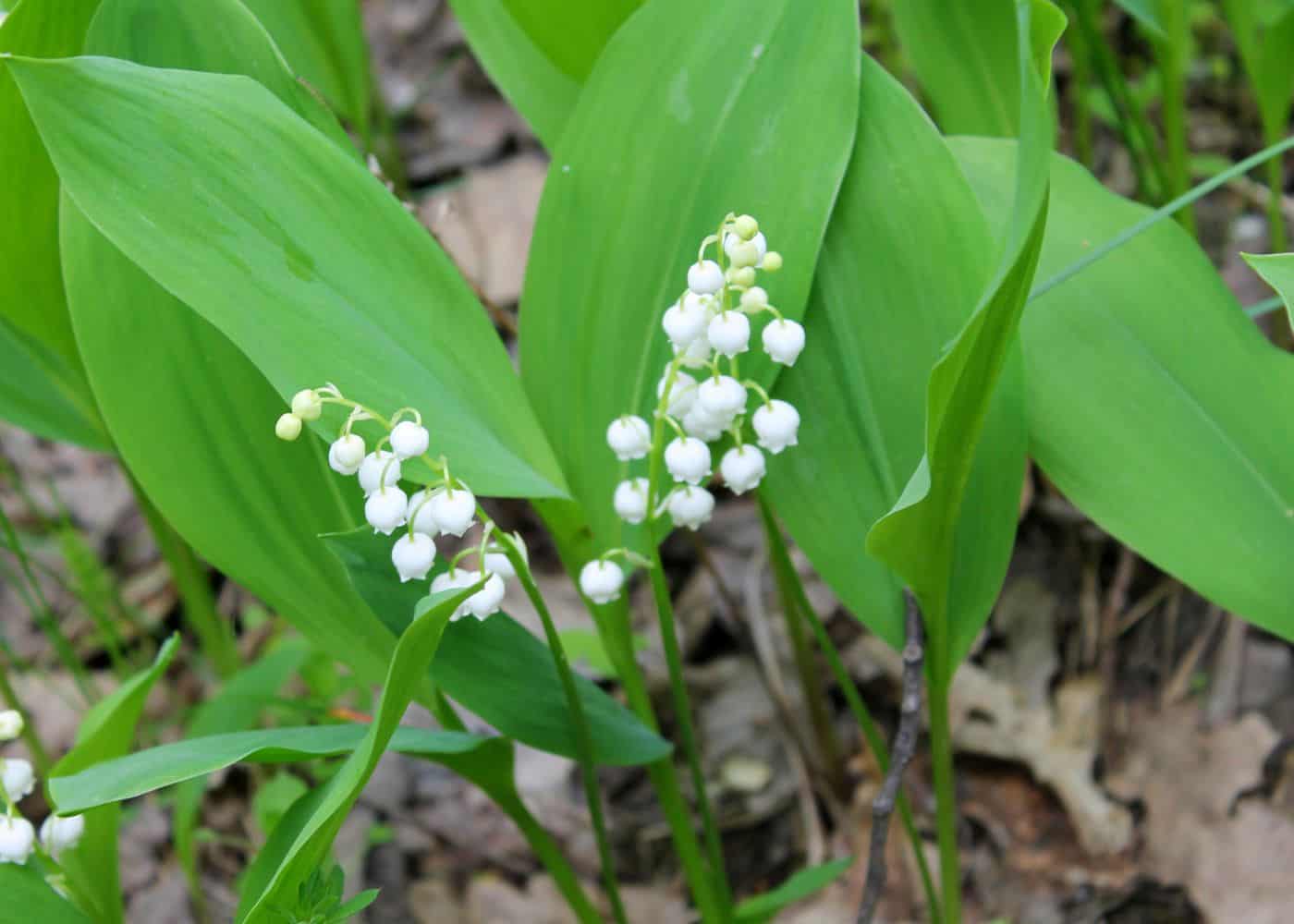
Planting lily of the valley in the garden
If you’re interested in planting lily of the valley in your garden, here’s what you need to know:
- Choose the right location. Lily of the valley prefers partial shade, so it is best to plant it in an area that gets some morning sun but is protected from the hot afternoon sun. It also prefers moist, well-draining soil but is tolerant of less-than-perfect conditions.
- Purchase healthy plants. Look for lily of the valley plants that have healthy, green leaves and are free from pests or diseases. If you’re planting from bulbs, make sure the bulbs are firm and free from decay.
- Plant at the right time. The best time to plant lily of the valley is in the fall or early spring when the soil is moist and cool. This will give the plants time to establish themselves before the hot summer weather arrives.
- Prepare the soil. Lily of the valley prefers a rich, humus-rich soil that is well-draining. If your soil is heavy or clay-like, you may need to add some compost or peat moss to the top 6″-12″ of ground to improve the drainage.
- Plant the lily of the valley. Plant the bulbs or plants about 3-4 inches deep and 12 inches apart. The rhizomes will spread underground to create a dense mat within several years. Water the plants well after planting, and mulch over bare soil to help keep the roots moist and cool.
- Care for the plants. Keep the soil moist but not waterlogged, and remove any weeds that may compete with the lily of the valley for water and nutrients. You can also fertilize the plants in the spring to help them grow and flower.
With a little bit of care and attention, lily of the valley can be a beautiful and fragrant addition to your garden. Its delicate white flowers will provide a splash of color in the spring and its sweet fragrance will fill the air. Just remember that the entire plant is poisonous (like so many other beautiful flowering plants in the garden).
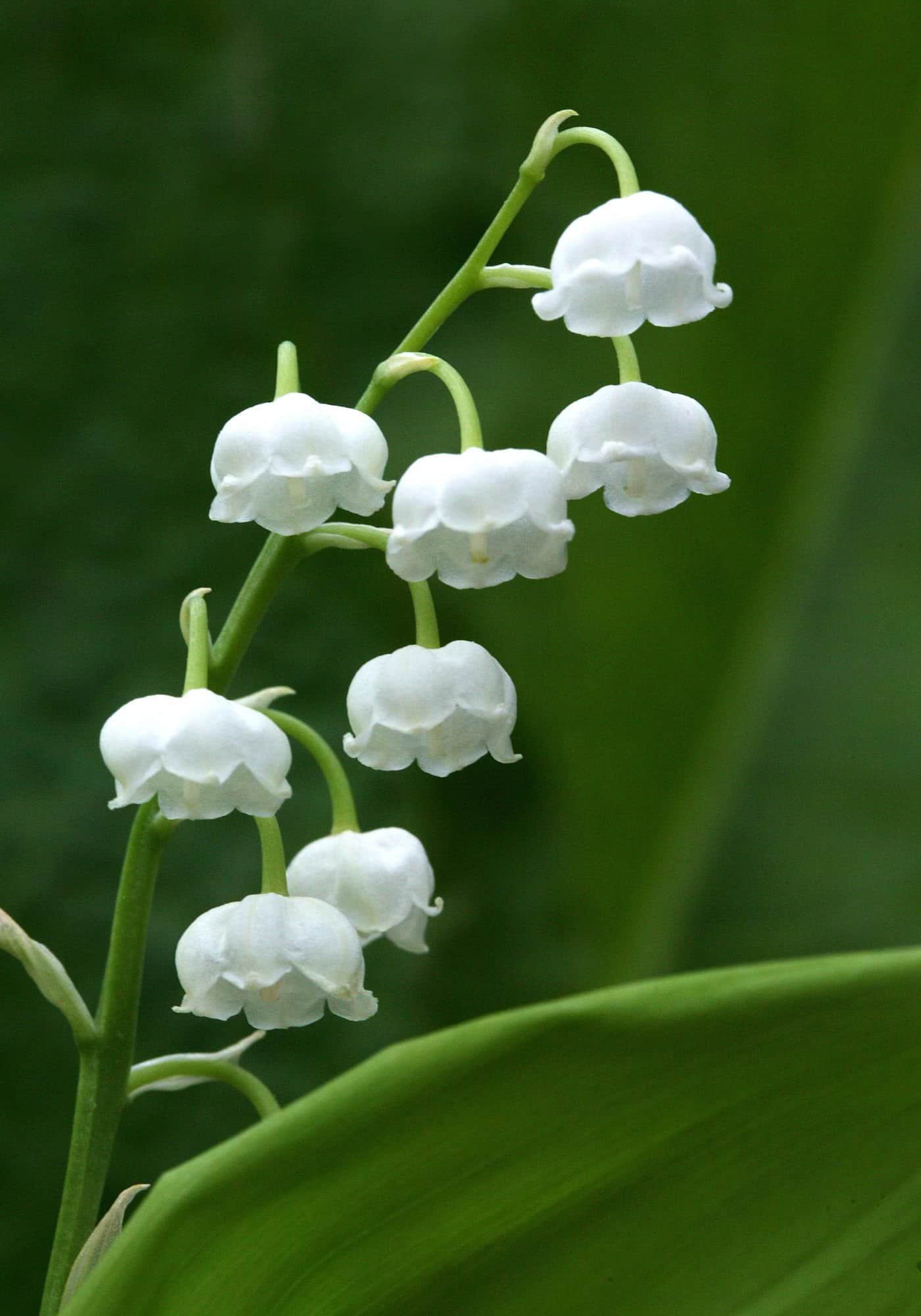
Plant care for lily of the valley
Water the plants regularly (especially for the first year or two). Lily of the valley prefers moist, well-draining soil, so be sure to water the plants regularly, especially during dry spells. Avoid overwatering, as this can lead to root rot.
Mulch the soil in late fall or early spring before the stalks start to appear. Mulching helps to retain moisture in the soil and keeps the roots cool. Use a layer of composted yard trimmings over the bare soil to help retain moisture and suppress weeds.
Fertilize your lily plants in the spring. Lily of the valley benefits from light fertilization in the spring. Use a balanced fertilizer and follow the package instructions for application rates.
Remove spent flowers by snipping off the flower stalks. Deadheading, or removing spent flowers, helps to encourage new blooms and keeps the plants looking neat and tidy. Simply snip off the faded flowers at the base of the plant. This will prevent the plant from putting too much energy into growing berries at the pollinated flowers.
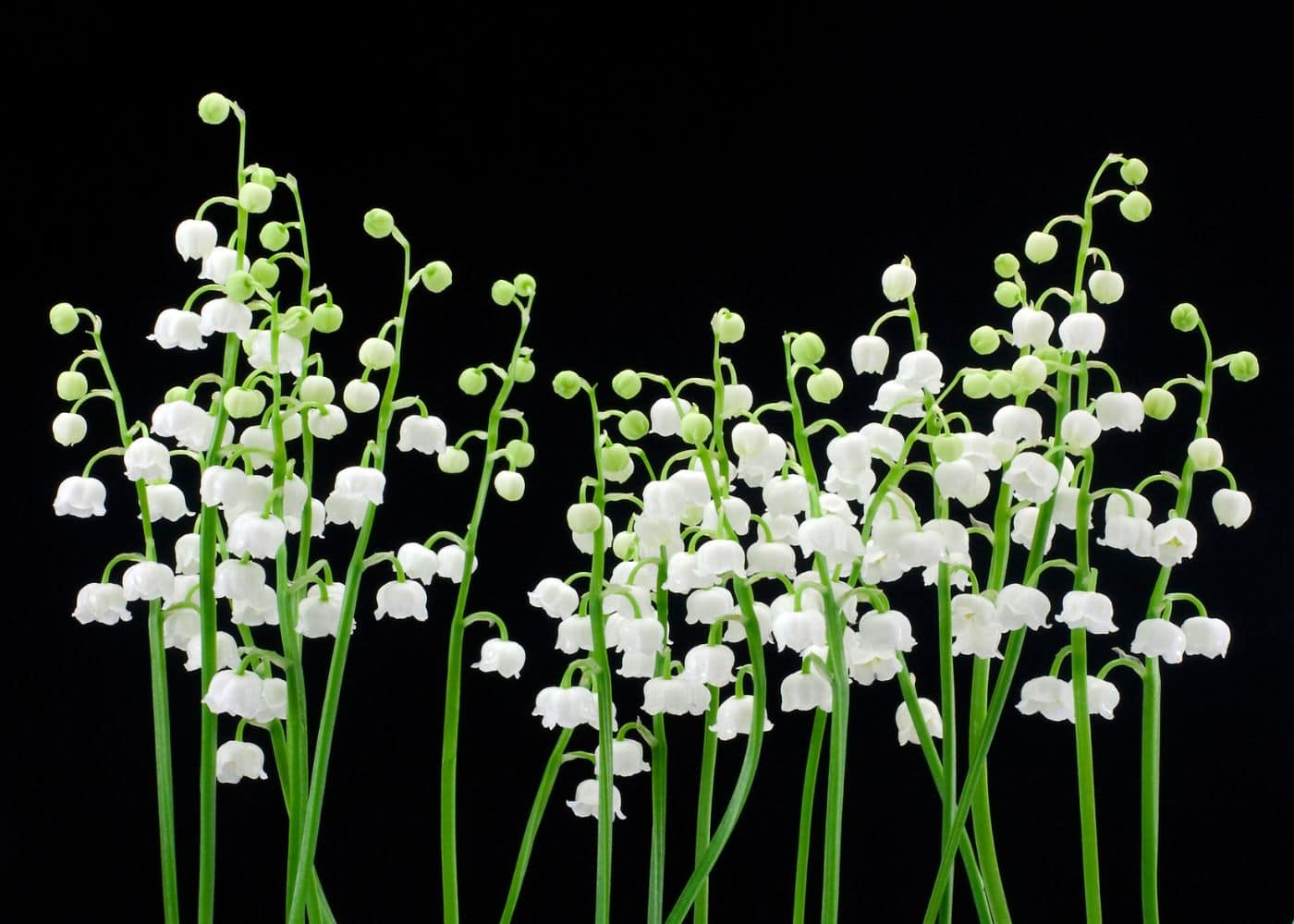
Lily of the valley plant toxicity
Lily of the valley is a very poisonous plant. Every part of the plant is poisonous, including the flowers, leaves, stems, sap, berries, stalks, and rhizomes. No part of the plant should ever be consumed nor planted in an area of the garden where it might be consumed.
“The plant contains a long list of toxins, mainly cardiac glycosides (some authors report 20–40)—primarily convallarin and convallamarin—that affect the heart and saponins that affect the gastrointestinal (GI) tract.”
Toxicology answer: the lovely lily of the valley, by Jason Hack, MD
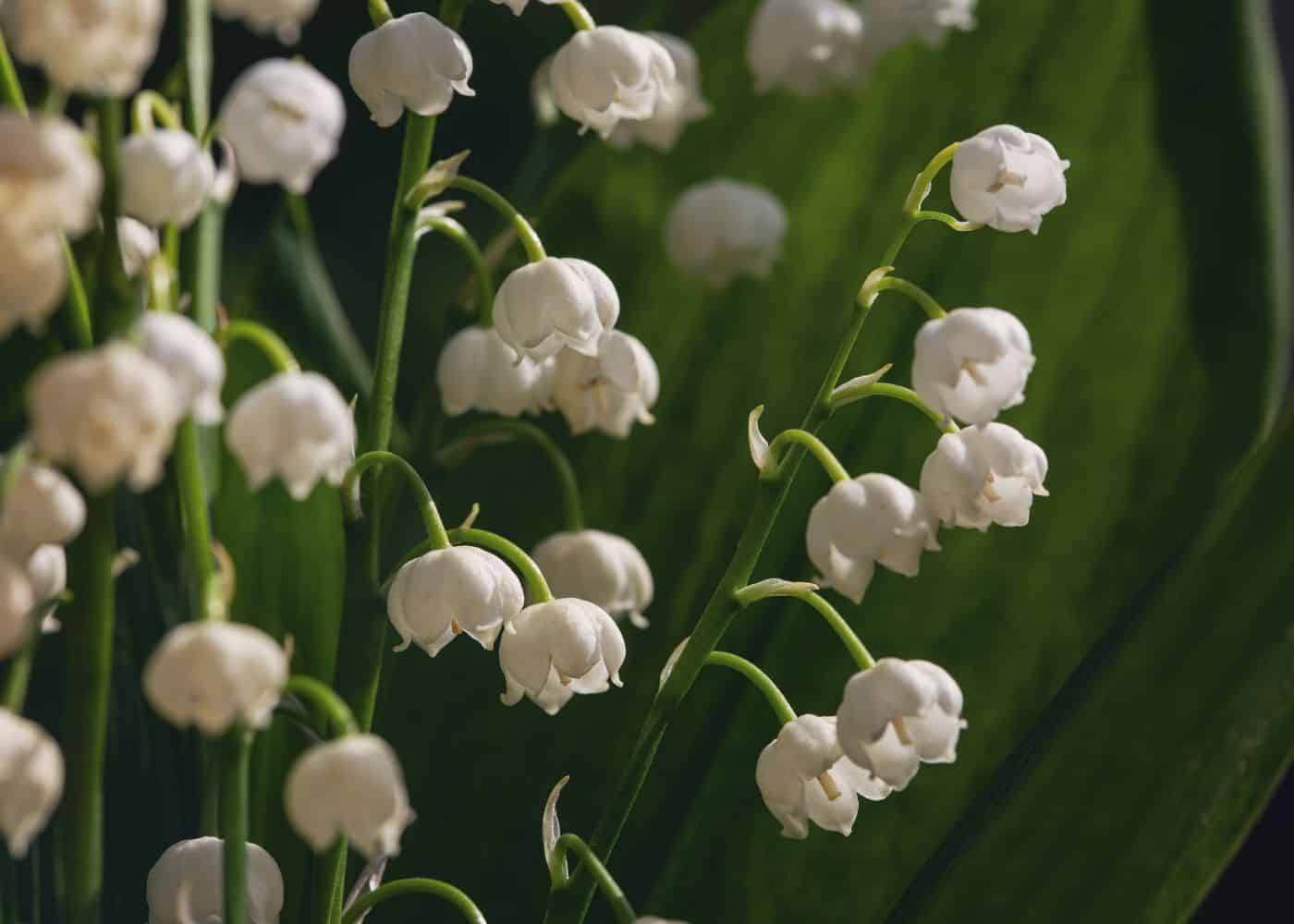
Companion plants for lily of the valley
Lily of the valley is a delicate and graceful flowering plant that pairs well with a variety of other plants. Here are some good companion plants for lily of the valley.
Hostas
Hostas are likely the most popular companion plant for lilies of the valley. The lily of the valley’s white blooms will contrast nicely with the deep green and blue-green foliage of hostas. Hostas range in size from mini hostas that have smaller leaves than lily of the valley to giant varieties that can be placed at the back of a shade garden.
Ferns
Ferns are graceful plants that will provide a soft backdrop for lily of the valley’s delicate blooms. Ferns also prefer moist soils, so they make an ideal companion plant for lily of the valley.
Astilbes
Astilbes are shade-loving flowering plants that have plumes of delicate flowers. They bloom in shades of pink, red, or white. They pair well with lily of the valley and add a warm splash of color to the garden.
Irises
The bold flowers of irises will create a stunning contrast to lily of the valley’s delicate blooms. Irises come in a variety of colors, including shades of blue, purple, yellow and white. They also thrive in moist soils, so they are an ideal companion if you have a bit more sunlight.
Bleeding hearts
Bleeding hearts are spring-blooming flowers have heart-shaped pink or red flowers and ferny foliage. They make a nice companion for lily of the valley and add a touch of romance to the garden.
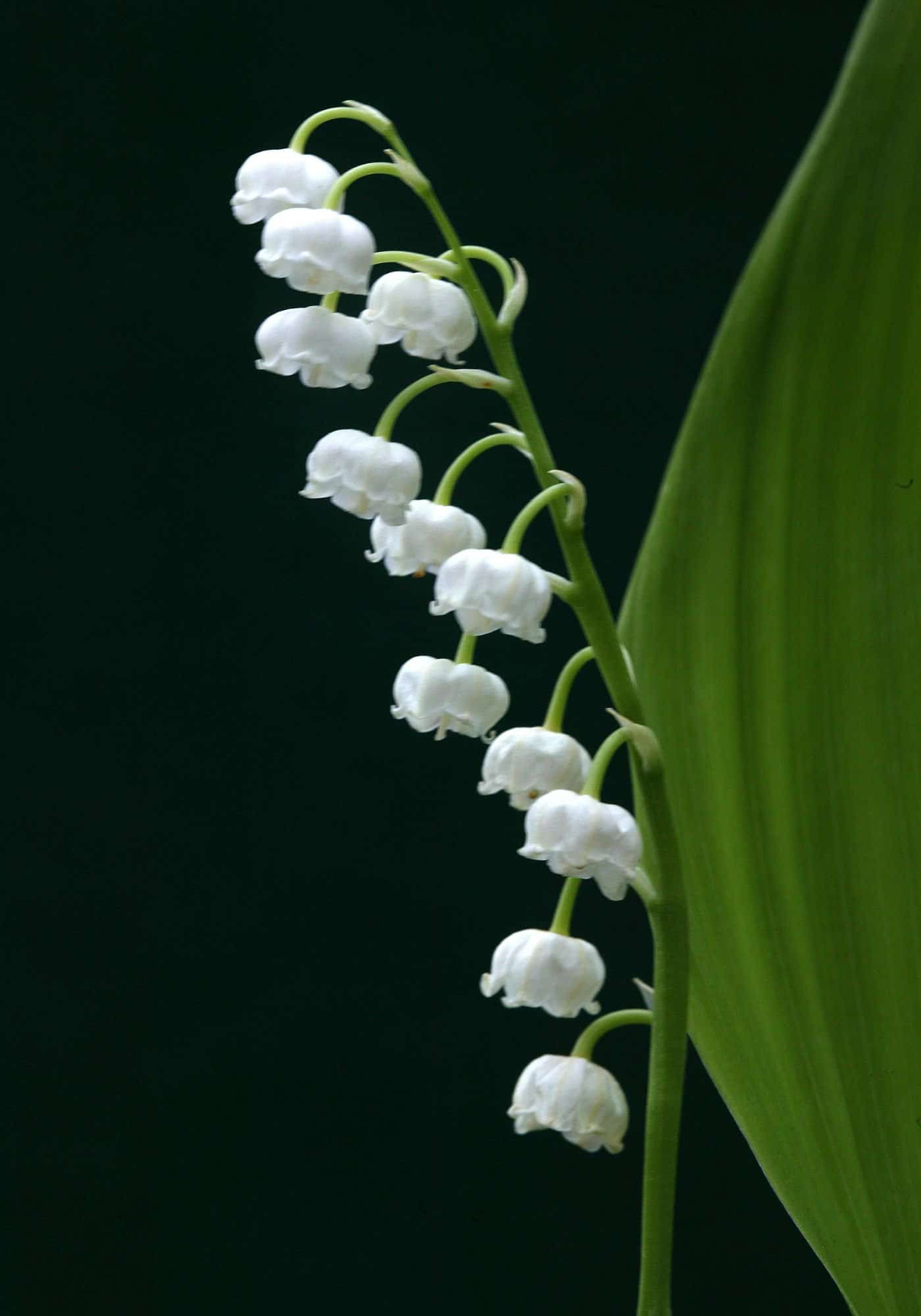
Propagating lily of the valley
Lily of the valley plants are most commonly propagated by division. The roots of the plant are shallow and easy to dig up. The roots can then be split up with a clean knife or offset plants can simply be pulled away from the root mass and planted separately.
Lily of the valley can also be propagated from seed, however, this method is not as reliable or easy. The seeds need to be sown right away in order for them to germinate, and it may take two years or more before you have blooms.
FAQs about lily of the valley plant
How do you propagate lily of the valley?
Lily of the valley can be propagated by dividing the rhizomes (rootlike underground stems) or by planting offsets (small plantlets that grow around the base of the parent plant). It is best to propagate the lily of the valley in the spring or early summer when the plant is actively growing. Simply dig up the rhizomes or offsets, divide them into smaller pieces, and replant them in pots or on the ground.
What is the meaning or symbolism of lily of the valley flowers?
Lily of the valley is often associated with purity, innocence, and the return of happiness. It is also seen as a symbol of motherhood and maternal love and is sometimes given as a gift to mothers on Mother’s Day.
How do you use lily of the valley in landscaping or gardens?
Lily of the valley is a popular choice for adding a delicate, fragrant touch to gardens and landscapes. It is often used as a groundcover, planted in borders or along walkways, or grown in pots or containers. It is also a popular choice for cut flowers and can be used in arrangements or as a natural air freshener.
Is lily of the valley a native plant?
Lily of the valley is native to Europe and some parts of Asia but has been introduced to other parts of the world and is now widely cultivated as an ornamental plant. It is hardy in USDA zones 2-9 and can be found growing in a variety of climates and conditions.


